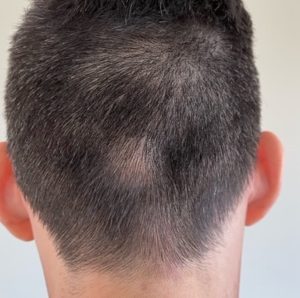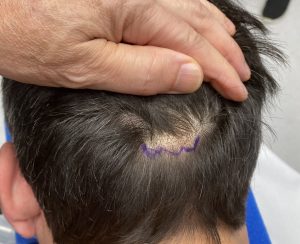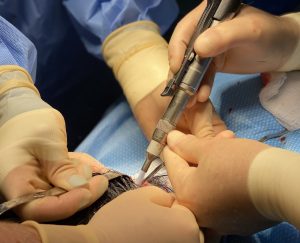Background: While bony bumps can appear on the skull at any location for a variety of reasons, the most classic and consistent skull bump is the occipital knob. This discrete bump of bone occurs at the base of the skull at the back of the head in the midline. It is consistent in its location because everyone has an inion which is a rudimentary and invisible ‘knob’. Why it develops more prominently in some people is not known. In my observation it tends to occur in two types of men (although not exclusively so), the bigger male with thick neck muscles and the very thin male with a more skeletonized skull and facial shape.
The most common occipital knob patient is a male who shaves his head. This is not surprising given the wide open exposure that any skull surface has in such a patient where the knob can be clearly visible. But the shaved head patient is not along being affected by a prominent knob. It can also be an aesthetic problem in patients with shorter and even medium length hair where it can still be visible or is an issue when they get a haircut. There are some patients who may even have discomfort when laying on the back of their head from the pressure of the knob on their scalp.
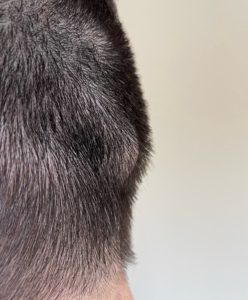
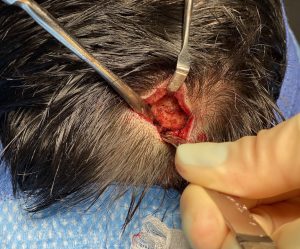
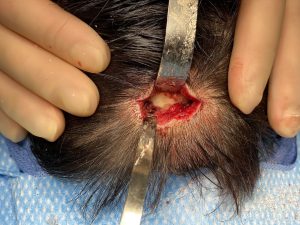
Recovery from an occipital knob skull reduction surgery is very quick. The procedure is performed in under one hour as an outpatient procedure. Returning to. normal activities can be done n a few days. Whatever swelling that occurs is limited to the back of the head.
Case Highlights:
1) Prominent occipital knobs create a visible bump even in patients with short to medium hair coverage
2) Occipital knob skull reductions can be done in patients with hair without the need for hair removal through very small incisions.
3) The recovery time for this very discrete skull reduction is minimal.
Dr. Barry Eppley
World Renowned Plastic Surgeon




